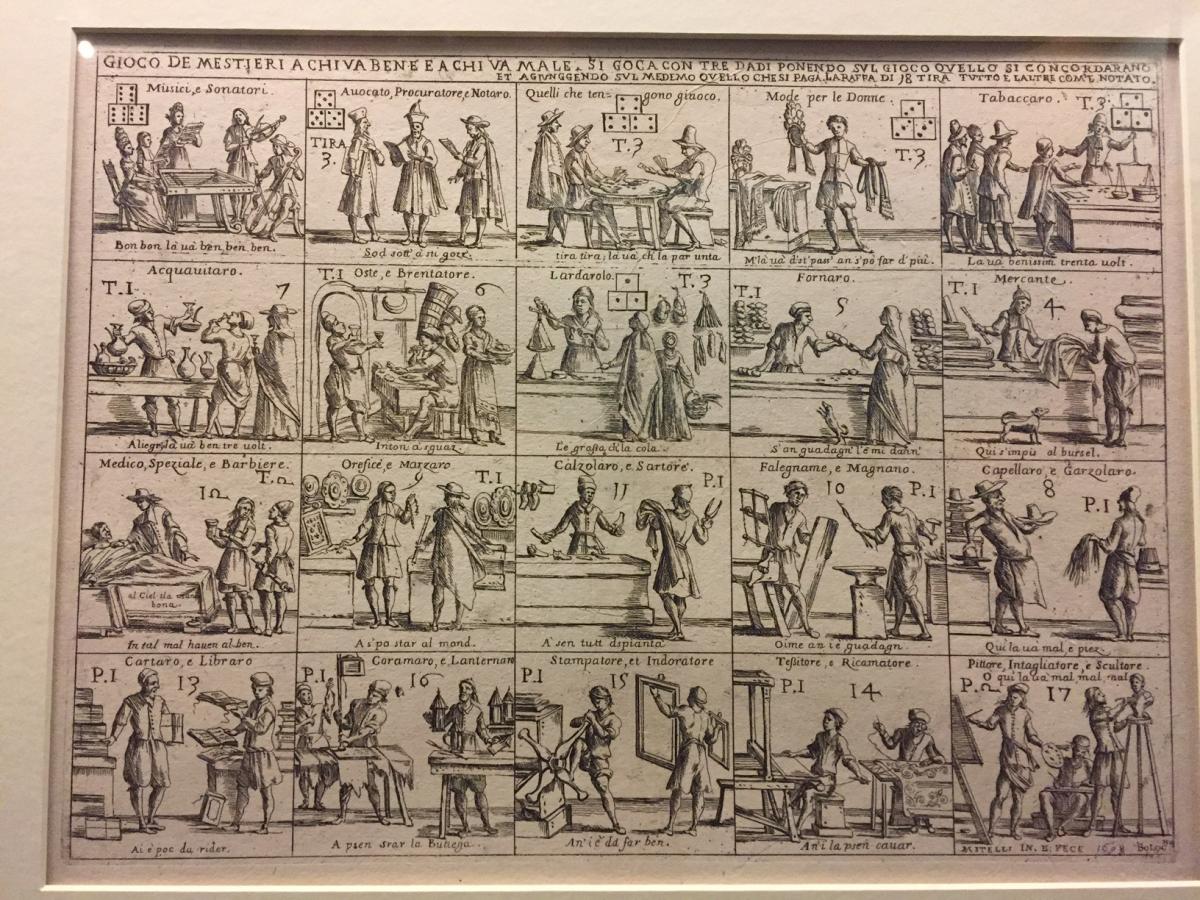I accidentally ended up at the British Museum last weekend. Once I had entered the building, I made a beeline for the printmaking exhibition, not because I have a particular affinity for prints, but rather because I assumed it would be less mobbed than the other galleries. This gem happened to be in a display case of 17th Century board games.

As you can see, each square corresponds to a particular throw of dice. In the squares are images and titles related to particular professions, ranked according to profitibility. A dice roll into any of the first twelve professions allows the player to take a reward from the pool, whereas the other eight require players to contribute. The informational placard reads, "The 'Painter, Engraver and Sculptor', where Mitelli playfully situates himself, is identified as the last and least profitable profession of them all." Upon reading this, I inspected the board to see whether it made any mention of musicians. At the top left, in the most profitable position of all - a roll of 6s - are musicians and minstrels. Yes, ranked even above lawyers!
Now I am curious - how did musicians come to occupy this square? Was it a joke? A sign of social respectability? An actual economic truth in 1690s Italy? If any of you have an explanation, please post it to the comments!
Edit: One of my professors mentioned that it could be that these musicians are actually nobles, who made music is a form of entertainment rather than to earn income.